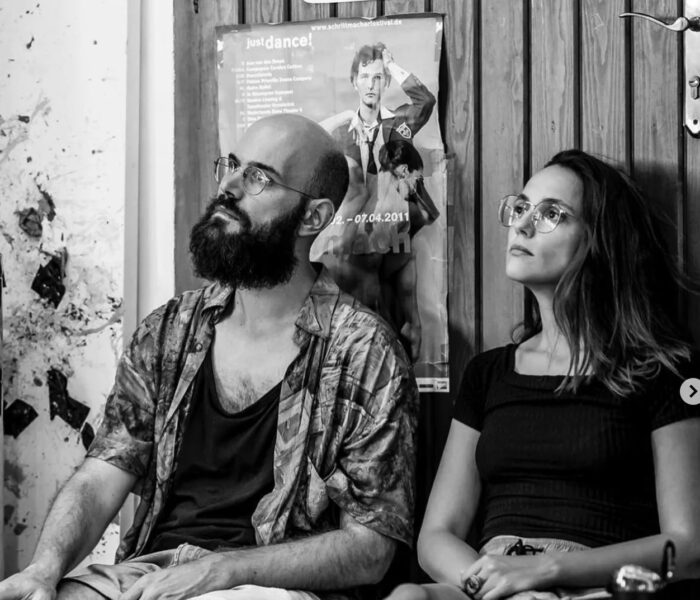Pensionnaire de la Casa de Velázquez à Madrid durant l’année 2022-2023, Gabriel Sivak est mis à l’honneur le 4 juillet prochain dans les murs de l’Institut espagnol où résonneront trois pièces du compositeur dont une création, commande de la Fondation Banque populaire, qui scelle la rencontre du musicien argentin avec l’ensemble vocal marseillais Musicatreize.
Gabriel, la voix semble un médium important dans votre composition : est-ce pour vous le modèle premier de votre travail ?
Non, je viens surtout de l’univers instrumental. L’écriture pour la voix a été pour moi une aventure qui s’est enrichie à chaque nouvelle expérience.
La composition pour chœur vous est-elle familière ?
J’ai déjà eu plusieurs expériences dans ce domaine, avec la Maîtrise de Radio France, Le jeune chœur de Paris ou encore Chœur en scène. Ma première commande, en 2010, était pour chœur d’enfants et j’avais fait le choix d’un poème de René Char, La patience. Je n’avais qu’un mois pour écrire ; ce fut un véritable défi. J’ai pris des risques mais je pense que pour faire des choses dans la vie, il faut un certain degré d’inconscience. Pour moi c’était aussi l’occasion de découvrir la poésie de René Char que j’admire énormément.
Comment avez-vous rencontré celle de Liliana Bodoc ?
Je l’ai découvert grâce à mon amie Jessica Dinzelbacher, comédienne argentine. Dans son poème 4 esencias, j’aime l’universalité de ses mots ; il y a aussi un côté enfantin et profond à la fois qui fait naître des images musicales très riches. J’avais écrit quelques années auparavant une pièce pour la Maîtrise de Radio France sur Voyelles, le célèbre poème de Rimbaud. Je pense que l’expérience a été très fructueuse et m’a beaucoup apporté pour l’écriture de 4 esencias.
Vous recherchez dans votre travail « l’intégration culturelle » : comment se manifeste-t-elle dans 4 esencias et dans Uray Purij Mayun (16 voix et piano) qui est également au programme du concert ?
Je ne dirais pas que la recherche d’une “intégration culturelle” s’entend comme un manifeste esthétique. J’essaie simplement d’intégrer tous les aspects de mon parcours de vie et d’artiste dans mon univers, dans ce chemin dont l’Argentine et le Brésil font partie.
Dans 4 esencias cette orientation reste très discrète, je n’utilise que quelques modes de jeu pour la voix comme le son « cuica » (l’instrument de percussion brésilien qui imite le singe), des timbres de voix qui imitent des shakers (autres instruments de percussion) ou des accents qui ont un swing un peu sud-américain.
Ces deux pièces figureront sur le CD qui sortira dans quelques semaines en lien avec la Casa de Velázquez ; Comment avez-vous complété le programme de ce disque ?
Le programme du CD sera complété par quatre pièces appartenant à ma dernière période : Lagrimas de Tahuari d’abord, interprétée par l’Orchestre des Pays de la Loire : cette pièce à la particularité d’être inspirée d’un séjour que j’ai fait l’an dernier en Amazonie avec les indiens Kuikuros, ce qui fut pour moi une expérience absolument marquante.
Descaminos est mon concerto pour violoncelle, orchestre à cordes et percussion réunissant l’Orchestre de Lutetia et le soliste Patrick Langot.
Kathakali est une pièce pour piano solo inspirée des rythmiques de tablas (percussion indienne) jouée par David Kadouch. Enfin, Suite Capoeira, écrit pour quatuor à cordes, est confié au Quatuor Voce.
Considérant votre travail dans sa totalité, où aimez-vous puiser votre inspiration ?
Dans les voyages, les passions amoureuses, les histoires de la vie, la nostalgie ou chez les artistes que j’admire… Dans un sens plus profond, je pense aussi que l’art est une façon de sublimer les choses et de combler les manques ; c’est un moteur éternel.
Est-ce votre première collaboration avec le groupe vocal marseillais ?
C’est la première fois que nous travaillons ensemble mais je connaissais bien sûr l’ensemble Musicatreize. J’avais rencontré Roland Hayrabedian à Paris il y a une dizaine d’années et l’on avait eu l’idée de monter un projet ensemble… chose que nous concrétisons aujourd’hui. 4 esencias est à l’origine une commande de la Fondation Banque populaire pour le jeune chœur de l’opéra de Hambourg qui s’est annulée en raison de la pandémie. C’est donc à Musicatreize que j’ai fait appel. Comme quoi le hasard fait bien les choses….
Le programme du concert qui sera donné le 4 juillet prochain à l’Institut Français de Madrid est complété par Uray Purij Mayun, une pièce que j’ai composée en langue quechua pour le chœur de l’Aude à Carcassonne. On entendra également The loveless land, un trio sur un texte d’Oscar Wilde écrit pour le ténor Carlos Donofrio à Saint Petersbourg.
Quel rapport instaurez-vous entre le mot et le son ; le mot est-il « traité » musicalement (vous évoquez la présence d’une caisse claire) ? Le texte doit-il être intelligible ?
La pièce est divisée en quatre mouvements selon les quatre essences (l’eau, la terre, le feu, l’air). À chacun des mouvements correspond un traitement de la voix spécifique.
Le premier est une trame sonore où je travaille seulement avec les sonorités qui peuvent surgir du mot agua, Dans Tierra, le texte est parfois morcelé pour créer des couches rythmiques, parfois dit de façon plus linéaire. Pour Fuego je travaille avec des sonorités très graves et primitives où je n’emploie seulement qu’une phrase du texte qui revient transformée à chaque fois. Dans Aire j’utilise les voix féminines dans un tapis harmonique qui évolue progressivement ; sur ce tapis, les voix d’hommes disent le texte à l’envers chantant à travers des caisses claires qui altèrent la couleur des voix. Je cherche une forme de saturation de la voix comme métaphore des dégâts produits par l’homme envers l’écosystème.

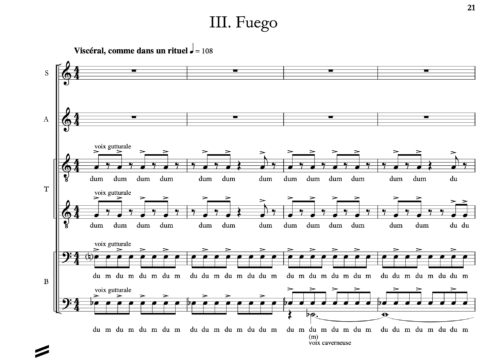
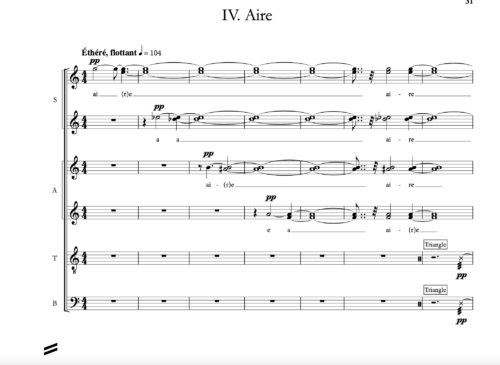
Quels sont vos références / modèles / maître(s) en matière d’écriture musicale ?
J’en ai un certain nombre parmi lesquels Olivier Messiaen, György Ligeti, Gérard Grisey, Giacinto Scelsi, Alberto Ginastera, Egberto Gismonti…..
Vortex temporum de Grisey m’a beaucoup marqué par l’idée de transformation progressive de la matière sonore ; Uaxuctum de Giacinto Scelsi pour le travail sur la profondeur du son. L’univers coloré et proche de la nature d’Olivier Messiaen est aussi un modèle majeur pour moi (Quatuor pour la fin du temps, Turangalîla, Saint François d’Assise). De Ligeti, certaines œuvres ont été très révélatrices comme Lontano, Atmosphères, les Études pour piano, les Concertos pour piano et pour violon. Alberto Ginastera est aussi une influence importante surtout dans la période où il essaie de mélanger musique abstraite et folklores argentins. Je citerais encore Egberto Gismonti pour l’influence rythmique brésilienne. Et parmi les compositeurs actuels, j’aime l’univers de Zad Moultaka et les opéras de Francesco Filidei.
Peut-on considérer 4 esencias comme un tremplin à l’écriture de votre opéra ?
A priori non mais chaque création pour moi est un livre ouvert qui me donne plein de leçons. J’attends donc d’avoir fini l’opéra pour savoir véritablement ce qu’il en est.
Quel format envisagez-vous pour cet ouvrage lyrique ?
J’écris l’opéra pour un ensemble de 12 musiciens, 6 chanteurs, électronique et vidéo. Il peut éventuellement accueillir un orchestre.
Prévoyez-vous de collaborer au livret et à la mise en scène ?
Oui, sans doute. J’ai créé la structure dramaturgique de l’histoire et j’ai ensuite laissé au librettiste Alejandro Tantaniàn le soin de rédiger le livret. Naturellement il a enrichi chaque scène avec son univers et l’élégance de son d’écriture. Je donne régulièrement des idées au metteur en scène ; en lui proposant par exemple l’utilisation d’une machine futuriste qui est centrale dans la trame dramaturgique de l’opéra (cette idée vient d’une installation sur l’imprimerie que j’ai créée en 2018 à la Sorbonne). J’apporte aussi des idées pour la partie vidéo (par exemple le cochon, ndlr).
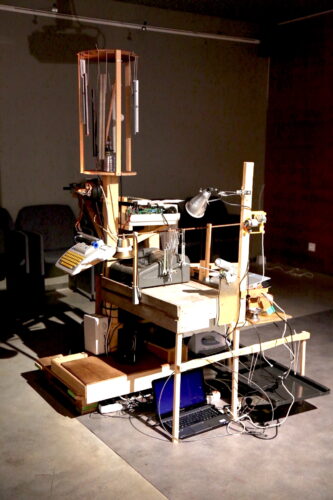
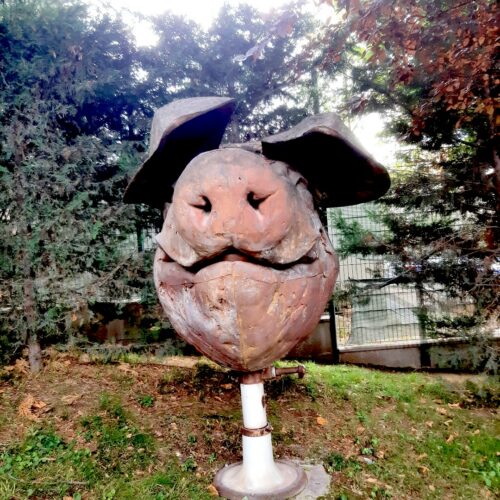
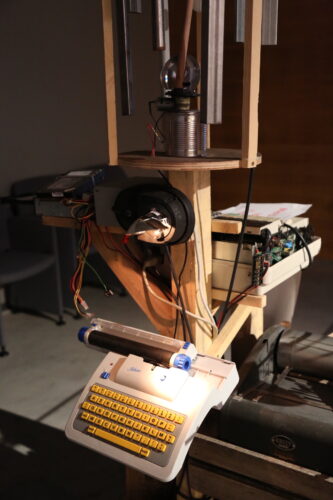
Pourriez-vous en quelques mots nous dire de quoi va parler votre opéra ?
Une famille bourgeoise est victime d’un crime (ce fait, est rappelé par les membres de la famille mais ne se produit pas dans la scène). Ce crime va progressivement transformer la vie et la psychologie de tous ses membres. La violence extérieure pénètre avec une telle force que, au cours de la pièce, les meurtriers ne seront plus à l’extérieur de la famille mais à l’intérieur d’eux-mêmes (j’appelle cela “la propagation”, titre provisoire). L’amour, représenté par une femme, apparaît comme une forme possible de salut, créant un puissant duel entre l’amour et la mort. Dans le salon de la maison se trouve une machine à imprimer futuriste où les membres de la famille rédigent leur journal intime, rempli de secrets de famille. Un jour, un membre décide de vendre la machine pour réaliser une émission sur Netflix. Cette décision provoque une crise interne aux proportions épiques.
Propos recueillis par Michèle Tosi



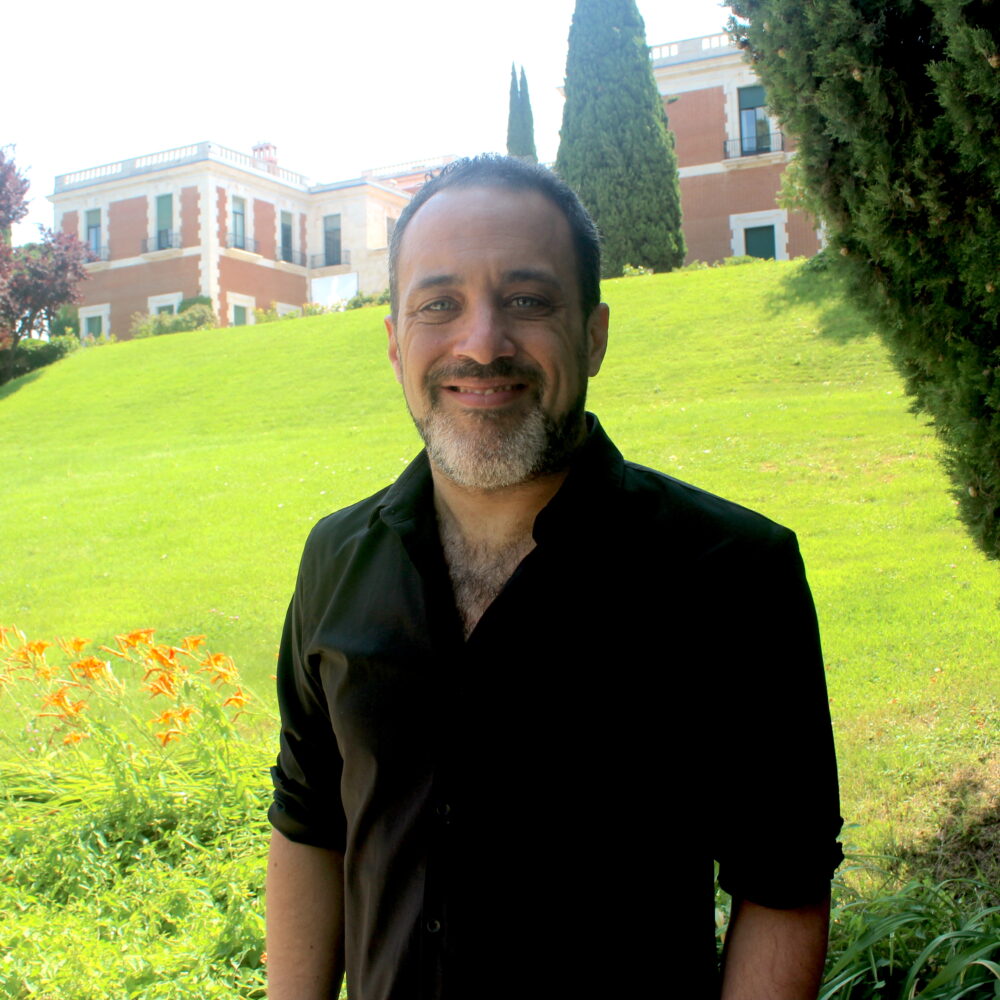)



